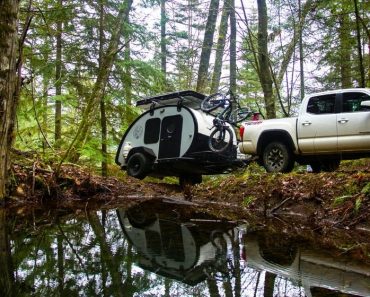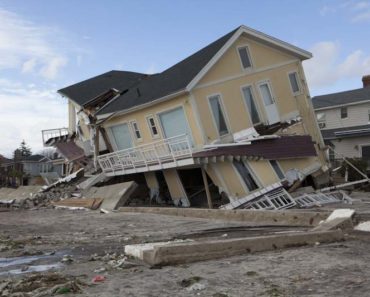Outdoor cooking isn’t just for backyard BBQs. It’s also about whipping up a meal anywhere with grit and resourcefulness. Knowing how to prepare hearty meals outside a traditional kitchen ensures your family stays nourished even during emergencies. So, grab your cast iron and let’s fire things up!
Outdoor Cooking 101: Delicious Meals Anytime, Anywhere
In a world of takeout and microwave meals, what happens when modern conveniences fail? That’s where outdoor cooking steps in. It’s a skill that separates the prepared from the panicked. Here are some outdoor cooking tips and methods that’ll help keep you well-fed in any situation:
The Fire Within: Campfire Cooking
Campfires are more than a source of light. They’re the ultimate survival stove. How? First, start by building a solid fire. A teepee or log-cabin setup works best for even heat distribution. Once your fire starts, you can explore different cooking methods.
For instance, foil packets are simple and effective. Wrap meat, vegetables, or fish in aluminum foil and add oil or butter (to prevent sticking). Then, put the foil packets directly onto the coals and you’re cooking! Skewers are another quick option. Grab a sturdy stick, thread it with sausages, vegetables, or even bread dough, and rotate it over the flames.
If you have a portable grill grate, you can cook burgers, steaks, or even pancakes over a fire. This method offers better control as it works well for multiple foods.
Makeshift Stoves: Portable Solutions for Tough Situations
When open flame cooking isn’t an option, makeshift stoves are the next best thing. These portable solutions are efficient and offer better heat control. They’re also easy to set up even during tough conditions.
Rocket stoves are also compact and use only small amounts of wood to produce strong heat. They’re great for boiling water or cooking one-pot meals. Meanwhile, portable gas stoves are ideal for controlled cooking. They’re reliable and convenient, plus they work well indoors if the area has proper airflow. Regardless of the stove, always carry a sturdy pot or pan for backup. Also, keep extra fuel handy in case you need more.
Ingredients That Go the Distance
Cooking in survival situations doesn’t mean giving up good food. Even with limited ingredients, you can still create delicious meals. Canned foods, for example, are a prepper’s best friend. They last a long time and are easy to heat using any cooking method. Grains like rice, oats, and pasta are also great options. They’re lightweight, store well, and give you lasting energy. Pair them with canned or fresh proteins for a balanced meal.
Foraging is another option if you know how to identify edible plants. Wild greens, berries, and nuts can add nutrients and flavor. Just make sure what you gather is safe to eat.
Additionally, a small spice kit can make even the most basic meals enjoyable. Essentials like salt, pepper, garlic powder, and chili flakes are lightweight and versatile. Keeping a few on hand ensures your survival meals never taste bland.
Easy Survival Recipes: From Breakfast to Dinner
Cooking during an emergency doesn’t need to be stressful. Simple recipes are enough to energize and sustain you during survival mode. These recipes require minimal tools and ingredients which makes them perfect for any situation.
For example, trail pancakes are a great breakfast option. Mix flour, water, and a pinch of salt to create a batter. Then, pour the batter onto a hot surface over the fire and cook until golden brown. Moreover, one-pot meals are a practical choice for lunch or dinner. Combine canned meat, rice, and vegetables in a pot. Add enough water or broth to cover the ingredients, and simmer until fully cooked.
Another favorite is foil-wrapped fish. Wrap a freshly caught fish with oil, lemon slices, and spices in aluminum foil. Place it over hot coals, and cook until the fish looks flaky.
Practical Tips for Cooking Anywhere
Outdoor cooking is easier when you follow a few basic rules. First, always ensure you use water that’s safe. If unsure, boiling is the simplest way to make it safe to drink. Second, keep your fire small to avoid losing control and always clear the area around your fire to prevent accidents.
Lastly, always use clean cooking tools and surfaces. For example, reuse cooking water to clean utensils and pack eco-friendly soap for easy washing.
The Bigger Picture: Why It Matters
Cooking without a kitchen isn’t just about making meals—it’s about adapting to challenges. While some might see it as inconvenient, it’s a way to connect with nature, test your creativity, and build confidence. More importantly, it prepares you to confidently face unexpected situations.
Preparing meals this way also helps you appreciate the simple things. You learn to maximize what you have and enjoy the process. Every meal becomes more rewarding because you’ve worked for it. The satisfaction you feel and the stories you share make it all worthwhile.
Cooking Through Crisis
Outdoor cooking during emergencies proves you can still whip up something extraordinary without a modern kitchen. Each meal you prepare over an open flame is a testament to your adaptability. So the next time life tests you, embrace the challenge and keep the embers burning. After all, where there’s fire, there’s a way.
FAQs: Outdoor Cooking
- What’s the easiest survival cooking method?
Foil packets—simple, quick, and versatile. - How can I safely cook indoors without power?
Use portable gas stoves in well-ventilated areas. - What’s the best fuel for campfire cooking?
Dry hardwoods like oak and maple burn slow and hot. - How do I keep my pots stable over a campfire?
Use a tripod, grill grate, or build a rock platform. - Can I cook raw meat on sticks?
Yes, but ensure it’s cooked thoroughly to avoid illness. - What’s a good spice kit for survival cooking?
Salt, pepper, garlic powder, chili flakes, and mixed herbs. - How can I boil water without a pot?
Use clean, heated rocks in a sturdy container like a metal water bottle. - What’s the best backup stove for emergencies?
Rocket stoves—they’re efficient and use minimal fuel. - Can I use candles for cooking?
Candles work for heating small amounts of food but aren’t efficient for full meals. - How do I keep my fire smokeless?
Use dry wood and maintain proper airflow in your fire structure.








![Kevin Owens and Pat Wylie talk Cybersecurity [PODCAST] Kevin Owens and Pat Wylie talk Cybersecurity [PODCAST]](https://survivalcove.com/wp-content/uploads/2021/10/Packing-Goats-Hunting-Survival-370x297.jpg)





















